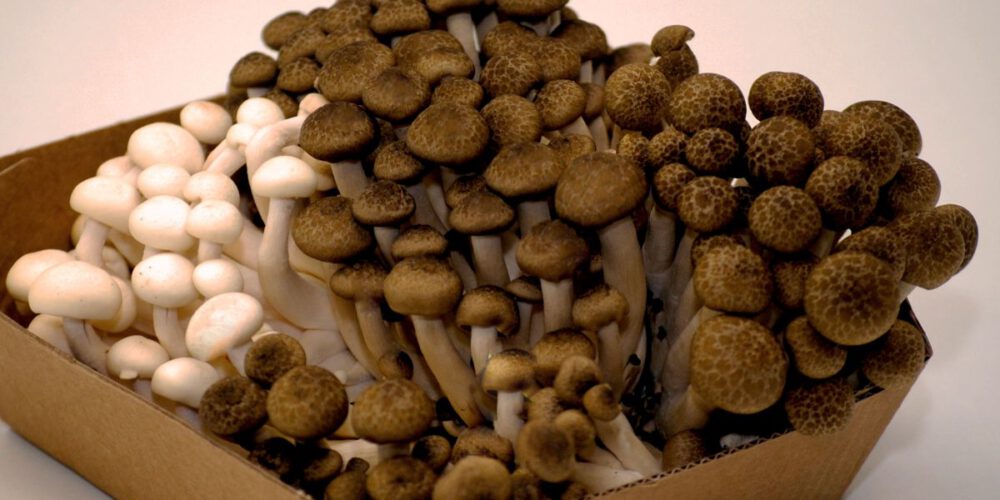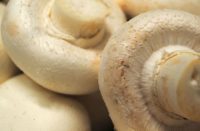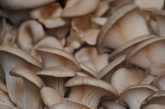Shimeji mushrooms are usually a small, white or cream-coloured mushrooms with a white or brownish cap. In Europe, it is almost exclusively cultivated. Its distinctive flavour and texture make it a popular staple in the cuisine of various nations. It is often used in Japanese and Far Eastern cuisine, but is increasingly appearing on store shelves around the world. These species can be confusing, as there is more than one type of shimeji mushroom. There are nearly 20 different species (e.g. Hypsizygus sp., Lyophyllum sp.), all of which are classified under the collective name ‘shimeji’ and all of which have a similar appearance.
Umami-rich tiny mushrooms
The shimeji mushroom is known for its mild, nutty flavour and crunchy texture. Cap of this mushroom is small and the stem is long and thin. This mushrooms are very fragile and should be handled with care. It is versatile in culinary terms and can be used in many dishes. During the cooking process, shimeji mushrooms can enhance the flavours, making the dish richer and more balanced. This is called umami, or fifth flavour. The umami flavour comes from the high concentration of naturally occurring amino acids known as glutamate. In addition to mushrooms, soy sauce, fish sauce, Parmesan and anchovies are high in umami.
Shimeji in the kitchen
Shimeji mushrooms are often used in Asian cuisine, in Japanese, Chinese and Korean dishes. It is an important staple in classic ramen soup, wok dishes or other traditional Asian meals. In addition, shimeji mushrooms are becoming increasingly popular in international cuisines and are part of many creative recipes.
It is easy to prepare and can be used in a variety of ways. Usually no washing is required, and the cultivation technique means that the fruiting bodies do not usually get dirty. The only preparation step is to cut off the ends of the bunch and separate the mushroom bodies. They have a slightly bitter taste when raw, which disappears when heated, so some form of heat treatment is always advisable.
They can be steamed, sautéed, boiled or even fried in an air fryer. To preserve the crunchiness of the mushrooms, the heat treatment should be short and intense. Shimeji mushrooms go well with other vegetables, meats or pasta, making them easy to integrate into the kitchen repertoire. The mushroom flavour can be paired well with soy sauce, garlic, sesame oil, chilli or ginger.
If you are vegetarian and looking for a meat substitute, you can try sautéing shimeji mushrooms in olive oil on their own or with other mushrooms such as shiitake and enoki. This can be the perfect side dish for any salad or light meal.
Nutrient content and medicinal properties
The nutritional value is low, as for other mushrooms. Rich in protein, fibre, vitamins and minerals. It is also low in fat and rich in other micronutrients, ash, phenolic compounds and organic acids. It contains a variety of vitamins (vitamins D, B3, B5, B12 and B13) and significant amounts of fibre, which can contribute to a healthy diet.
Thanks to its high vitamin D content, it contributes to healthy bone growth. It can also help prevent or control diabetes, cancer, heart disease and high blood pressure.
Shimeji mushrooms also contain high levels of selenium, a mineral that is key to thyroid health. Shimeji is also a source of zinc, which is important for immune health, wound healing and promoting a healthy appetite.
Mushrooms, including shimeji, are also a common player in various cancer research programs. It contains a number of compounds (glycoprotein HM-3A, marmorine, beta-(1-3)-glucan, hysiziprenol, hypsin) that are thought to have anti-cancer activity.
Numerous studies have shown that its active ingredients can reduce cholesterol levels in the blood and cells, while also being powerful antioxidants. Other studies have shown that Hypsizygus tessulatus can help reduce the risk of stroke in people with high blood pressure and protect lung health.
Overall, shimeji mushrooms are not only tasty and nutritious, but also versatile in the kitchen. It is also a medicinal mushroom with promising results. It can enrich meals and can be found in many recipes, offering a variety of culinary adventures to those who try it.












